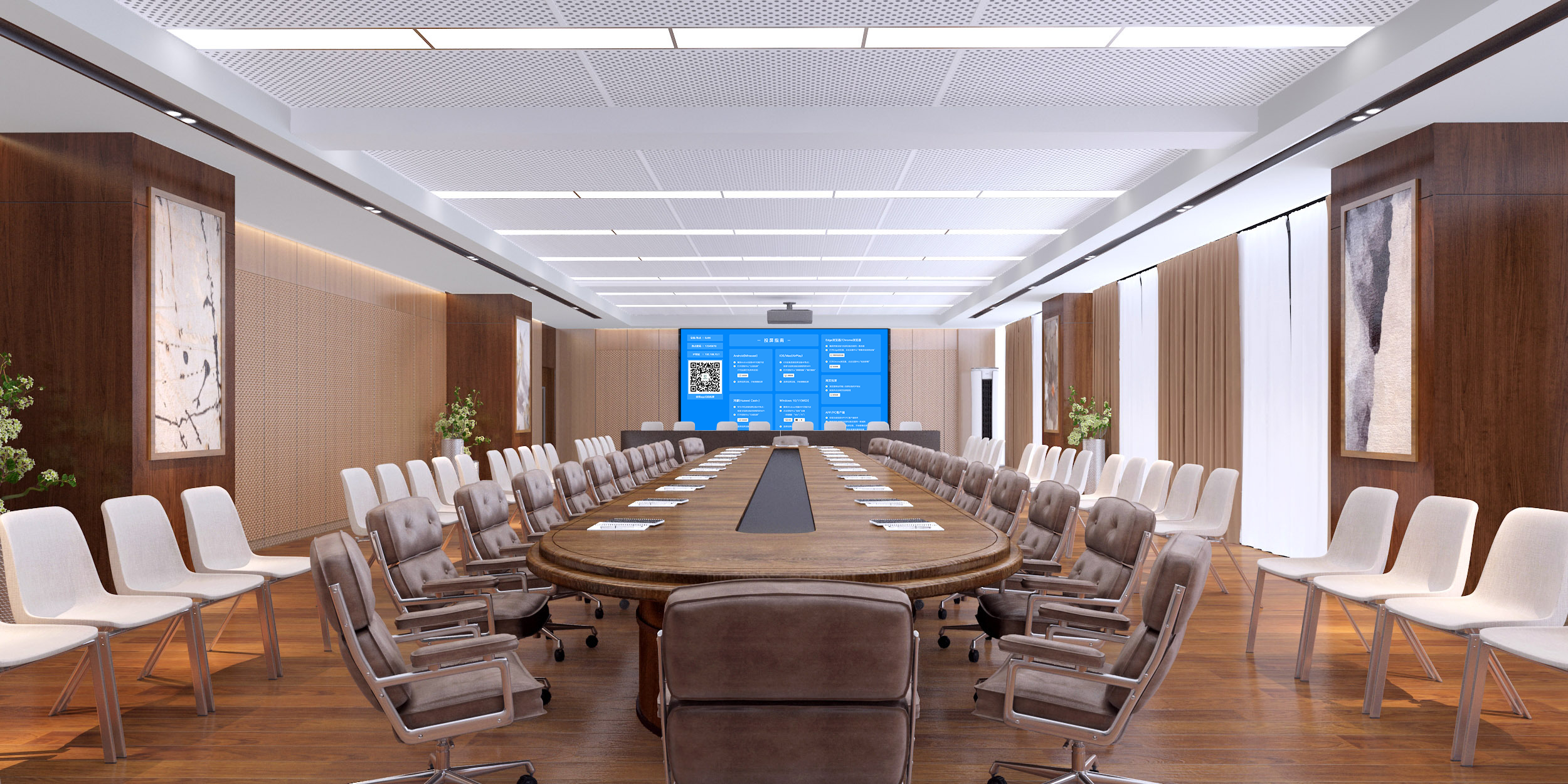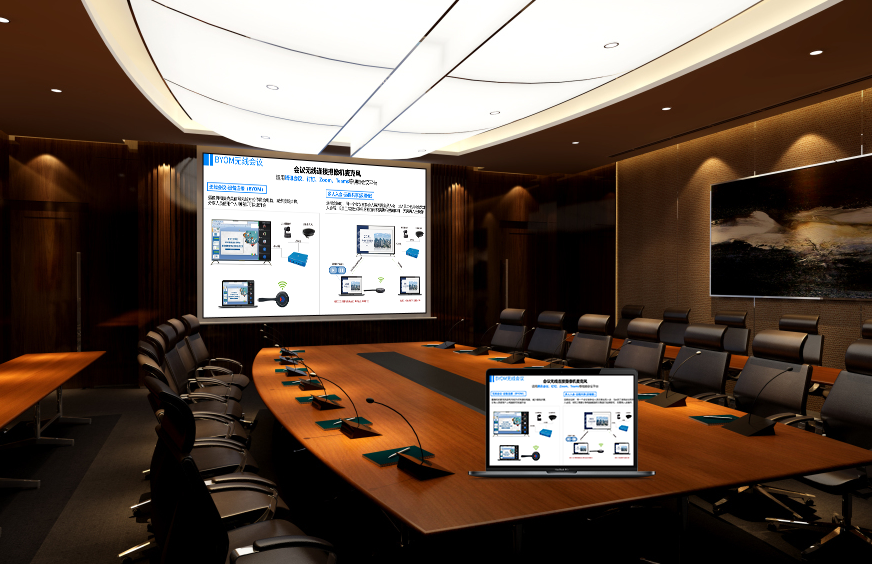WiDi and Phone Screen Mirroring: A Cross-Terminal Collaboration Solution
The integration of WiDi, a wireless screen mirroring protocol for Windows devices, with phone screen mirroring is breaking down system and device barriers. With the technical integration provided by Bijie’s screen mirroring devices, content from Windows devices and phones can flow in both directions, making multi-terminal collaboration smoother and meeting the cross-device application needs of various scenarios, including office and education.
Two-Way Protocol Adaptation for Seamless Cross-Terminal Interconnection
Bijie’s screen mirroring devices have a built-in dual-protocol conversion module that can stably support the WiDi protocol and is compatible with all major phone mirroring protocols. After a Windows device initiates a connection via WiDi, a phone, whether it’s using iOS “Screen Mirroring” or Android “Wireless Projection,” can be integrated into the same mirroring system via a Bijie device. There’s no need to install extra conversion software; a phone can form a link with a WiDi device in under 3 seconds by scanning a QR code or using NFC tap-to-connect. The connection success rate is consistently above 99.7%.
This two-way adaptation enables content to be transferred in both directions. A document that a Windows computer is mirroring via WiDi can be received and annotated by a phone in real time. On-site photos or videos mirrored from a phone can also be synchronized to the large screen connected to WiDi. The screen resolution remains consistent, and the audio-visual synchronization error is controlled to be within 25ms, preventing content distortion or delay during cross-device transmission.
Extended Functional Synergy for More Efficient Multi-Terminal Collaboration
With the protocol integration technology of Bijie’s screen mirroring devices, WiDi and phone mirroring can be “spliced.” For example, during a meeting, a Windows computer can use WiDi to mirror a proposal framework, while a phone simultaneously mirrors a supplementary video of a client case. The Bijie device can automatically splice the two into a split-screen view, with the framework on the left and the video playing on the right. Attendees don’t have to switch mirroring sources frequently, so information acquisition is more continuous and discussion efficiency is increased by 40%.
It also supports “permission linkage” control. An administrator can set mirroring permissions on the Windows side via WiDi, and then phone mirroring requires approval before the content can be displayed—this is suitable for confidential scenarios. Conversely, a phone can also act as a “remote controller” to adjust the volume of the WiDi mirrored content, switch PPT pages, and even pause the mirrored content. This makes collaboration more flexible because the operation doesn’t require you to be near the computer.
Practical Value for Multi-Scenario Implementation, Adapting to Diverse Needs
Office Collaboration Scenarios
During a project discussion, a Windows computer can use WiDi to mirror core data reports, and team members can use their phones to mirror their own analysis ideas. The Bijie device displays the content from multiple terminals in a split-screen view, making it easy to compare different proposals at a glance. If someone finds a data anomaly, they can take a photo with their phone, annotate it, and mirror it. The annotations are synchronized to the large screen and computer connected to WiDi, and the revision suggestions are transmitted instantly, shortening the proposal revision cycle by 30%.
During remote work, an employee can use a Windows computer to mirror their work screen via WiDi, while their phone simultaneously mirrors the on-site situation of the materials. Remote colleagues can see both the data and the physical status of the materials, making communication more precise. If a file needs to be added on the fly, it can be dragged directly into the mirrored document from a phone after mirroring, without needing to transfer it repeatedly. This increases cross-terminal collaboration efficiency by 50%.
Educational Scenarios
A teacher can use a Windows computer to mirror courseware via WiDi, while their phone mirrors a real-time classroom quiz. After students scan a QR code to answer, the results are synchronized via phone mirroring to the main screen, displayed in a split-screen view with the WiDi courseware. The teacher can then explain the incorrect answers on the spot based on the courseware, making the teaching more targeted. Students can use their phones to mirror their problem-solving steps, and the teacher can use a computer connected via WiDi to retrieve reference materials. The side-by-side comparison and commentary on two screens increase knowledge absorption efficiency by 35%.
In a computer class, a teacher can use a Windows computer to demonstrate software operations via WiDi, while students use their phones to mirror their own interfaces. The teacher can simultaneously view the WiDi courseware and multiple students’ mirrored phone screens on the main screen, and they can provide guidance on the spot when they find an operational error without having to check each device individually. This makes teaching guidance more efficient.
Design Scenarios
A designer can use a Windows workstation to mirror a 3D design model via WiDi, while a phone mirrors a client’s handwritten revision suggestions. The Bijie device splices the model and the suggestions together for display. The designer can then adjust the parameters on their computer based on the suggestions mirrored from the phone, and the revised model is updated in real time via WiDi. The client can use their phone to view the result synchronously, increasing proposal confirmation efficiency by 50%. When multiple designers collaborate, each can use a Windows device to mirror a part of the design via WiDi, and a phone can mirror integrated suggestions. The main screen then summarizes all the content, making the creative fusion process smoother.
The integration of WiDi with phone screen mirroring, with the support of Bijie’s screen mirroring devices, breaks down the collaboration barriers between Windows devices and phones. Without complex setup, cross-terminal content can flow flexibly, and without frequent switching, the functions of multiple devices can work in synergy. This transforms different terminals from “working in isolation” to “linked collaboration,” redefining the high-efficiency model of cross-device interconnection.